Written by Steven Huynh, illustrated by Gehenna Pham, published by Steven De GC
The story follows a young girl who struggles to express herself calmly, often shouting when she feels frustrated or unheard. Through her journey, she learns to recognise and understand her emotions (AC9HPFP03, AC9HP2P03 – Foundation to Year 2, Health and Physical Education) and works to develop positive strategies for expressing her thoughts and feelings in respectful ways (AC9HPFP02, AC9HP2P02 – Foundation to Year 2, Health and Physical Education).
The story also encourages children to explore characters’ perspectives and emotional responses, fostering empathy (AC9HP2P01 – Health and Physical Education, Years 1 and 2). It helps them define safe and unsafe environments, such as calm corners, through interactions with friends in a classroom, establishing help-seeking strategies in such situations (AC9HP2P05 – Health and Physical Education, Years 1 and 2).
With its poetic language and engaging illustrations, The Shouting Girl helps students understand how rhyme and rhythm create cohesion in a text. It also explores how words and images shape settings and characters, along with other literary features such as lists of three and similes.


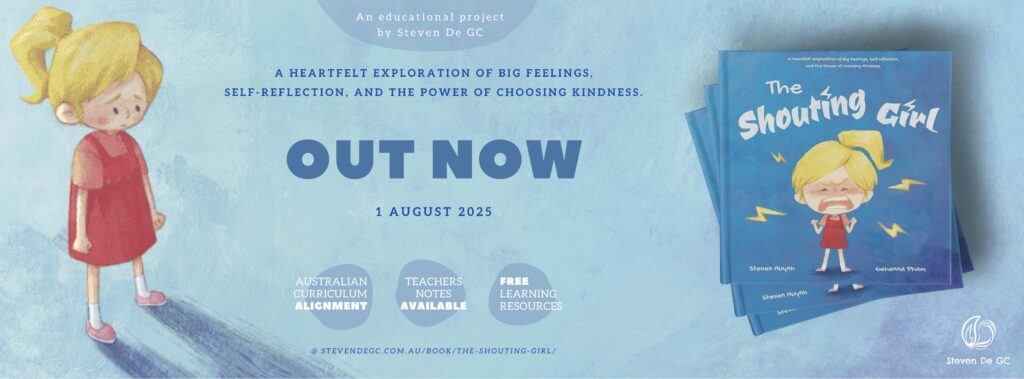
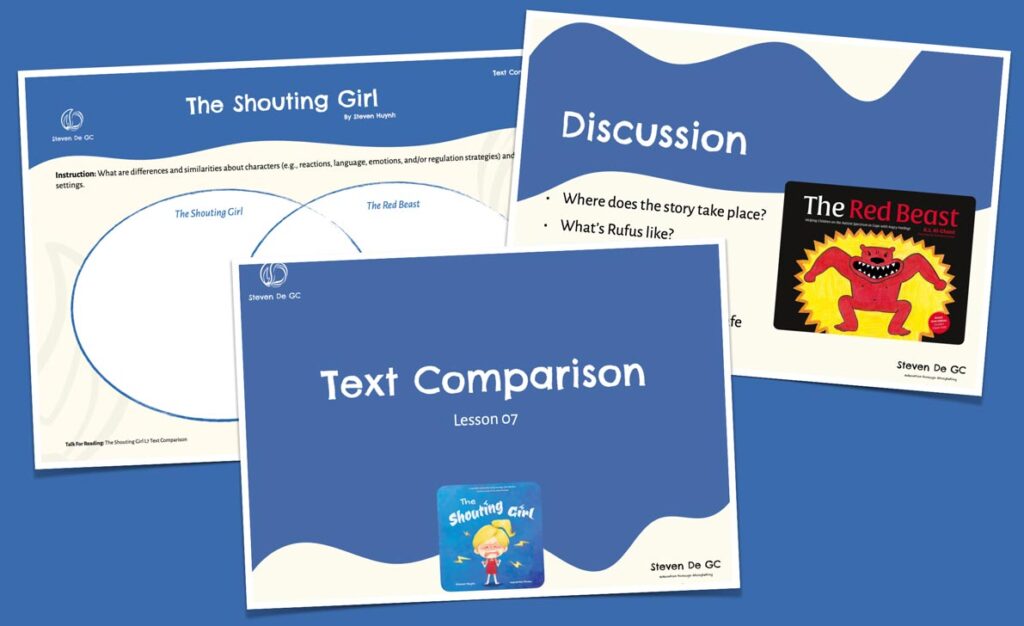

![[T4R] The Shouting Girl Reading/Health Unit for Year 2 [T4R] The Shouting Girl Reading/Health Unit for Year 2](https://stevendegc.com.au/wp-content/uploads/2025/07/T4R-TheShoutingGirl-UnitOverview-Cover-1024x627.jpg)
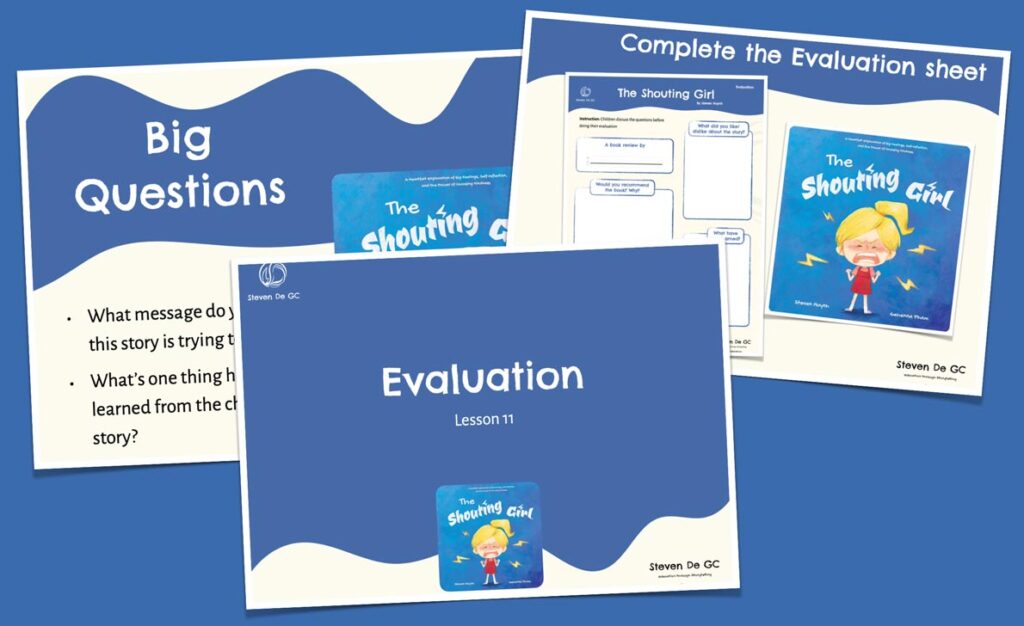
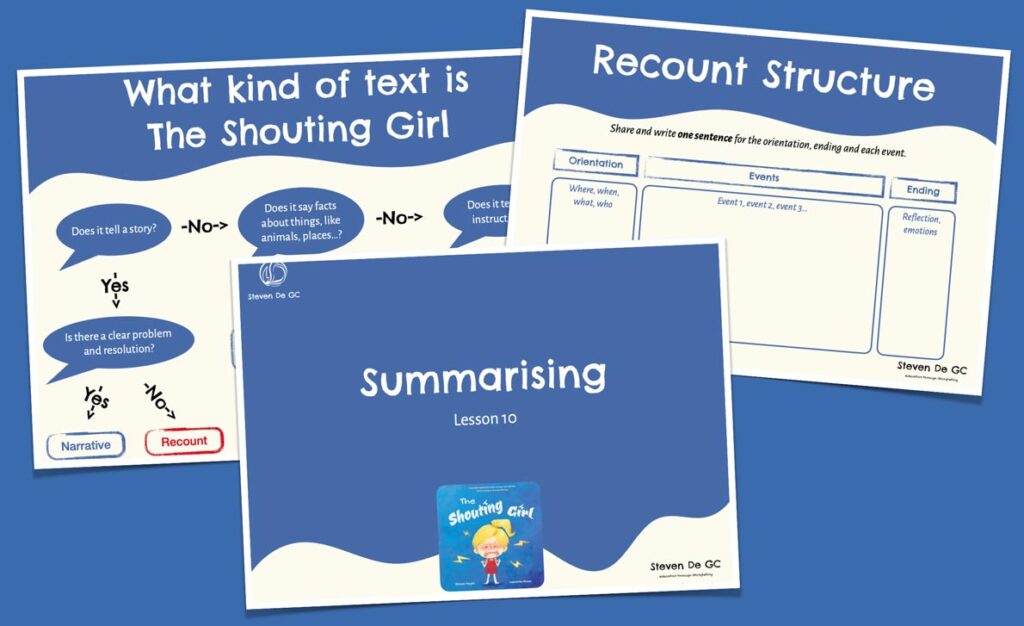
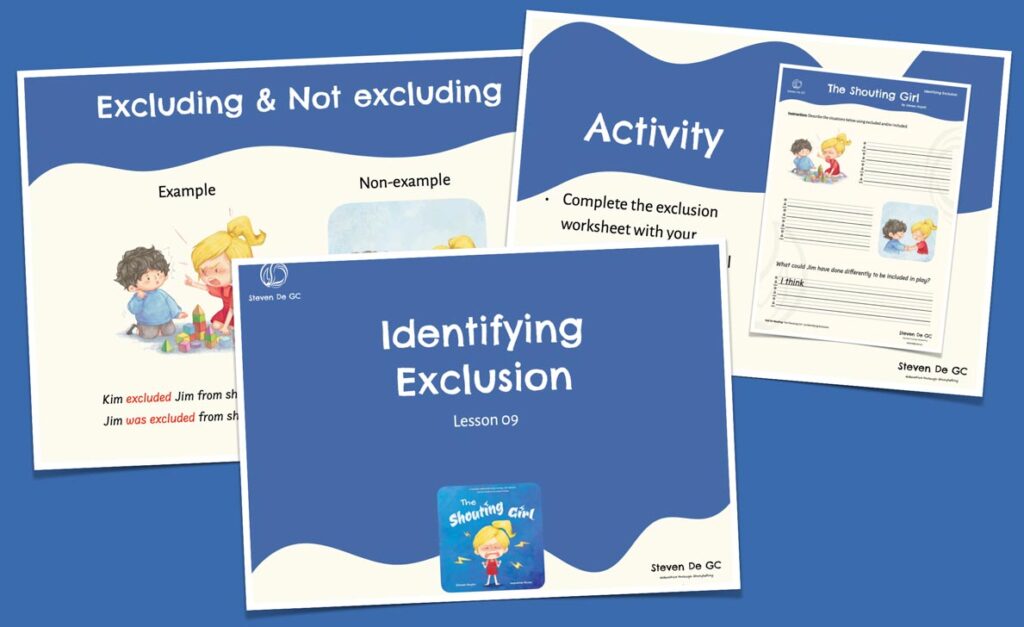
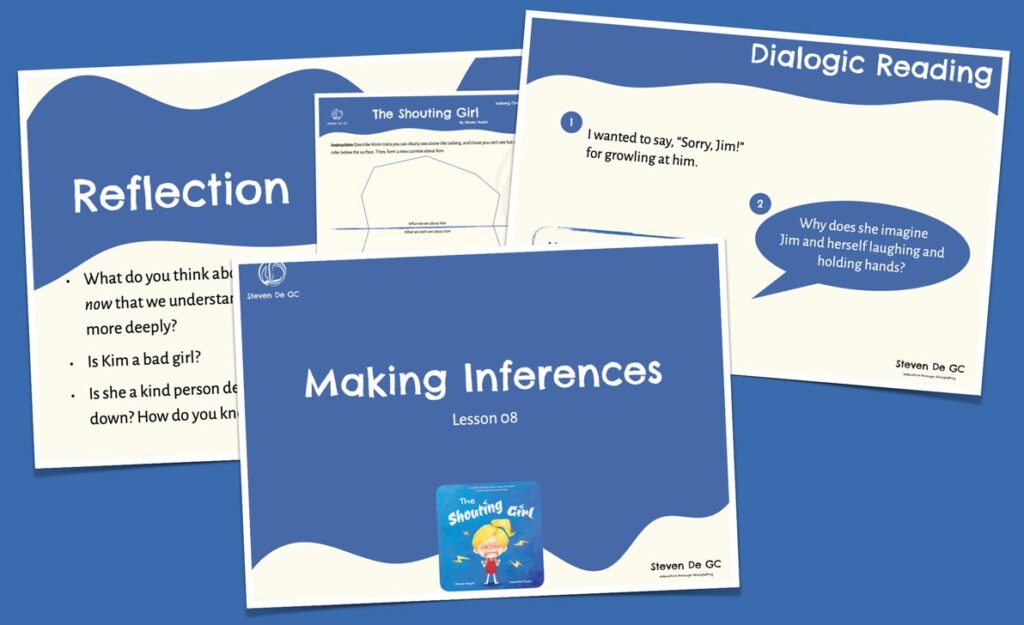
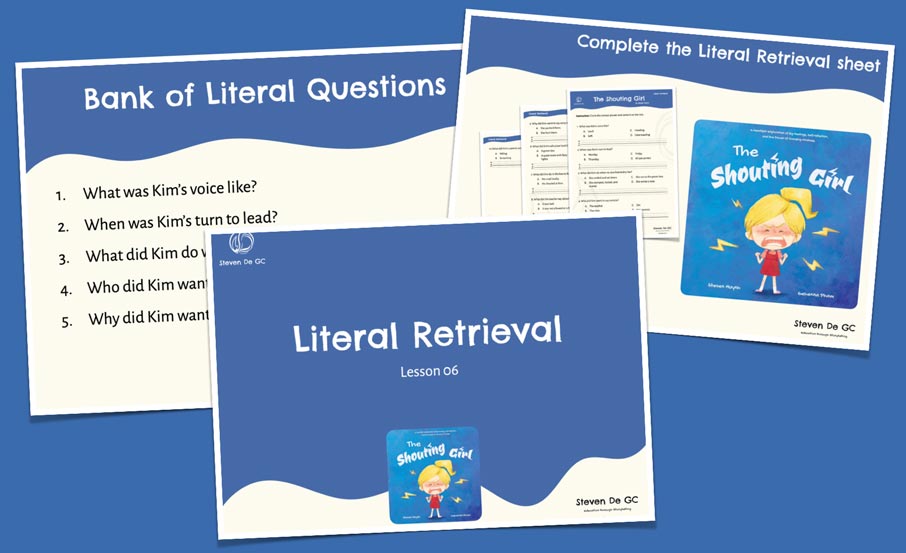
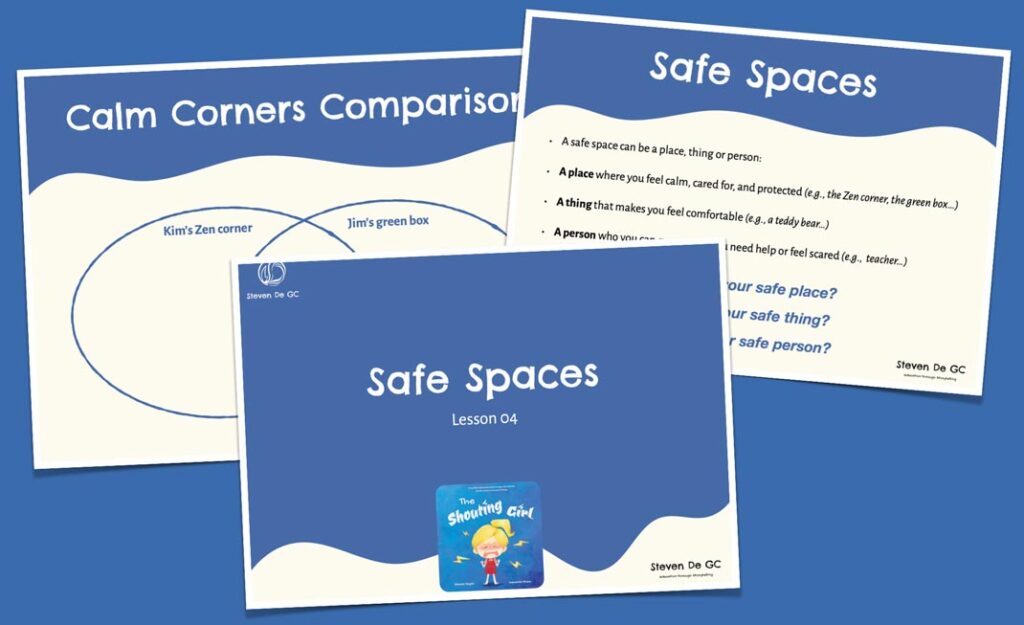
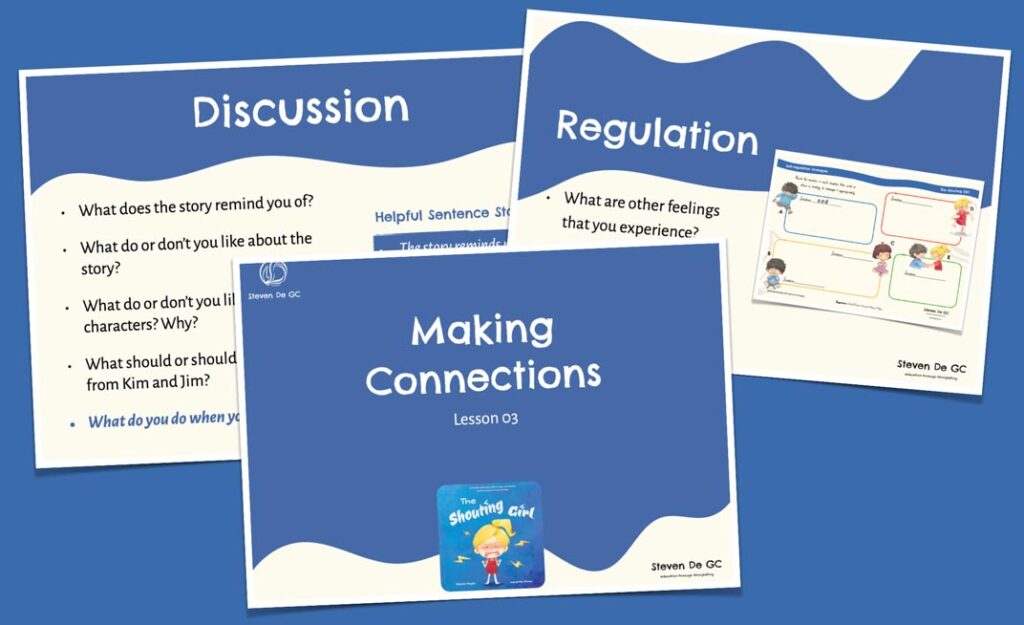
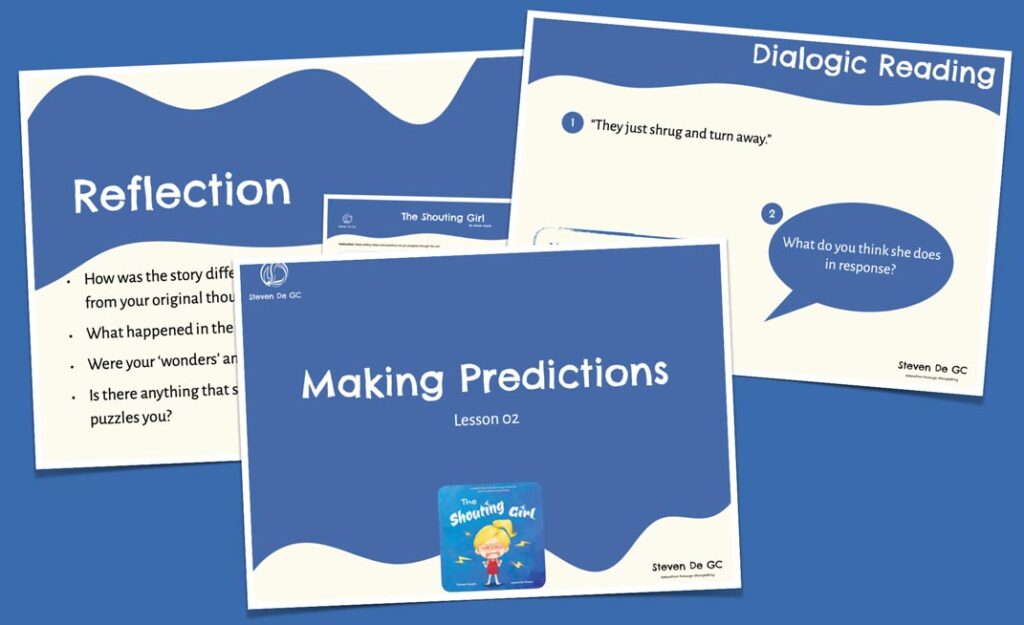
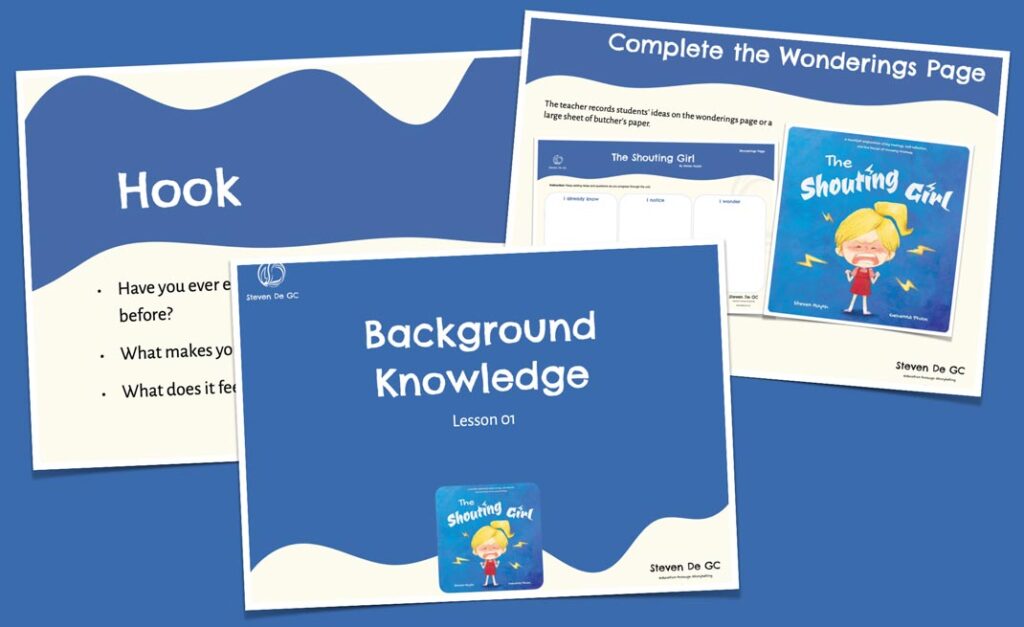
Leave a Reply